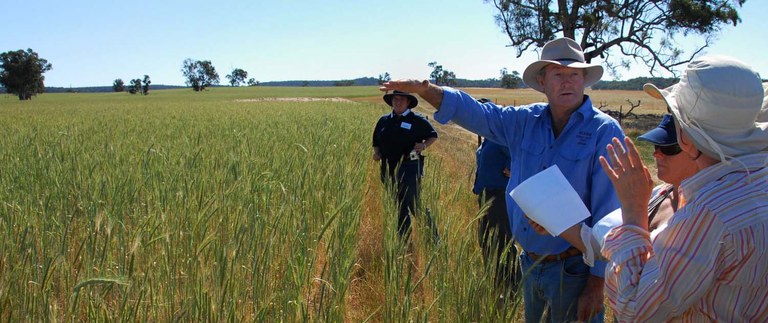
Innovative cropping techniques
Published 4 November 2016. Watershed Landcare will be hosting a workshop on Multi Species Pasture Cropping with Colin Seis, pioneer of this innovative cropping technique which was developed right here in the Central Tablelands...
Watershed Landcare will be hosting a workshop on Multi Species Pasture Cropping with Colin Seis, pioneer of this innovative cropping technique which was developed right here in the Central Tablelands.
The concept developed over a beer when Mr Seis, together with Daryl Cluff, started exploring the idea of ‘fast tracking’ improvement in degraded soil and grassland while producing crops for human consumption and/or stock feed.
Unlike conventional techniques where crops are sown into bare soil or stubble, Pasture Cropping allows sowing directly into a dormant pasture by exploiting the niche created by temporarily suppressing perennial pasture growth.
This produces an annual crop, either for grazing or harvest, with multiple added benefits to soil health. By avoiding the need to kill the competitive pasture, soil structure, biological health, nutrient cycling and water retention are not only maintained but improved and there is a reduction in wind and water erosion. The input costs associated with Pasture Cropping are also significantly reduced compared to conventional practices.
Mr Seis' commitment to caring for the land, championing better practices and giving his time to share knowledge with others was recognised when he was awarded the Bob Hawke Award at the 2014 National Landcare Conference for developing, fine-tuning and improving Pasture Cropping.
He is in much demand as a speaker, and travels all over Australia and the world teaching others how to implement the technique.
Since 2010 Mr Seis has been developing 'multi species pasture cropping' on his Gulgong property, 'Winona', in order to produce better forage quality and further improvements to soil health.
The mix is based on oats, legume and brassica but other species can be incorporated depending on on paddock/soil conditions and desired outcomes. For example, to increase insect control or pollination over the whole farm, flowering species such as vetch or field peas can be included.
As well as all the financial and ecological benefits of Pasture Cropping, utilising multiple species has added advantages.
Planting multiple species in a pasture crop minimises risk, if conditions are not ideal for one of the crops. Mr Seis has also observed agricultural benefits; the fattening and finishing potential of a multi-species pasture crop is greater than oats alone and less scouring is experienced.
The cost for a basic multispecies mix for winter stock feed, sown in autumn is as little as $98/ha (not including machinery/contract cost of sowing and herbicide/fertiliser application).
The Multi Species Pasture Cropping Workshop will be held on Monday, 14 November 1-4:30pm in Lue.
This workshop will provide participants with an introduction to Pasture Cropping and will cover principles, practical implementation and the benefits of pasture cropping with multiple species.
This event is free to attend for Watershed Landcare members and $10 for non-members, with afternoon tea provided.
For more information or to RSVP contact Claudia Wythes, Watershed Landcare Co-ordinator, on 0412 011 064 or by email: claudia.wythes@watershedlandcare.com.au.
This event is supported by Watershed Landcare through funding from the Central Tablelands Local Land Services and is a part of the NSW Government’s Local Landcare Coordinators Initiative, supported through the partnership of Local Land Services and Landcare NSW.




